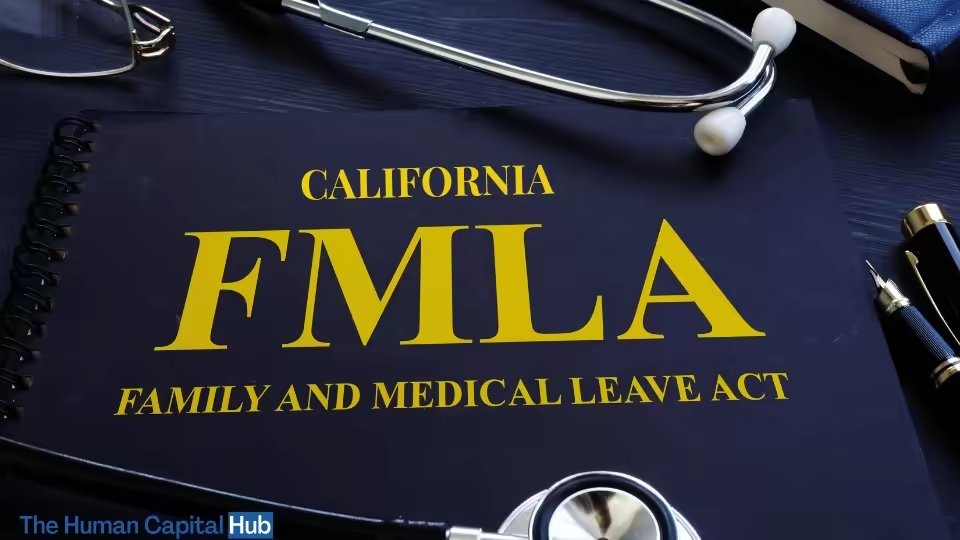FMLA (Family and Medical Leave Act) is a federal statute that grants eligible workers up to 12 weeks of unpaid leave annually for specific family and medical reasons. The employee may use this leave to care for a family member with a significant health condition, to give birth to or adopt a child, or for their serious health condition. An employee's job is safeguarded while they are on FMLA leave, and they are allowed to keep their health insurance benefits.
According to the FMLA leave, businesses with five or more employees must offer qualified workers up to 12 weeks of unpaid, job-protected leave annually for specific reasons. These factors consist of:
- A significant health condition of the employee (other than a limitation connected to pregnancy or childbirth)
- A worker's requirement to care for a brother, grandparent, child, parent, spouse (including a registered domestic partner), spouse, or child with a significant health condition,
- A worker's desire to form a bond with a new child within 12 months of the child's birth, adoption, or placement in foster care
- Short-notice deployment, military events, activities, and spending time with a covered service member on short-term leave are all examples of "qualifying exigency" military leave.
Related: Employee Sick Leave
However, California has its version of the law, called the California Family Rights Act (CFRA), which provides similar leave rights with some key differences. Here's what you need to know about FMLA leave in California.
1. FMLA leave in California -Eligibility
The right to FMLA leave in California without pay is granted to employees who have worked for the company for at least twelve (12) months. A qualified employee who is the spouse, registered domestic partner, child, parent, or "next of kin" of an injured, covered service member is qualified for FMLA leave in California.
2. FMLA leave in California -Entitlement
Employees who qualify may take up to twelve (12) weeks of unpaid family and medical leave (FML) in a calendar year for the birth of a child, the adoption or foster. They also qualify for the care of a child, parent, spouse, registered domestic partner, sibling, grandparent, or grandchild of the employee with a serious health condition.
A covered military member may use military exigency leave (FML) to address problems due to deployments or calls to active service abroad. Depending on the type of leave taken, military exigency leave time off varies and is subtracted from the twelve (12) week entitlement.
3. FMLA leave in California - Time Taken
FML is unpaid leave; however, employees must use the proper leave credits before taking any unpaid component. The employer may enquire more into the reasons for the absence if the employee requests to use vacation or other paid time off.
An employee must use all eligible leave credits, including sick leave, vacation, compensatory time off (CTO), and personal holidays before using any unpaid FML component when awarded for their bad health condition. The necessary policies must be followed if the employee's significant health condition also makes them eligible for an Industrial Disability Leave (IDL), a Temporary Disability, or a Non-Industrial Disability Leave (NDI).
4. FMLA leave in California - Request and Approval
The employee may be asked to present evidence from a medical expert stating that there is an FML-qualifying cause. As soon as the employee learns of the circumstance calling for the leave, they must give written notice.
In general, the occurrence that necessitates the need for leave must be disclosed as far in advance as is reasonably possible, but often not less than five (5) working days.
The employee must give the employer at least fourteen (14) days' notice if the need for family and medical leave is anticipated due to the employee's qualifying reason.
5. Job Protection
When a family and medical leave is approved, the employee is guaranteed the right to return to their prior or comparable employment. One of these alternate methods may be to offer the employee any other open position for which they are qualified. This is not the only option. To determine seniority and length of service under this Agreement, FML shall not be considered an interruption in service.
Related: 11 Reasons Why Employees Fake Sick Leave
Paid FMLA leave in California
Paid FMLA leave is one of the supplementary leave privileges that Californian law offers. What you need to know about Paid FMLA in California is provided here.
1. Paid FMLA in California – Eligibility
California requires that applicants for Paid FMLA have paid into the state's disability insurance program and earned at least $300 in base pay during the base period. Additionally, you must take time off to connect with a new kid or care for a chronically ill family member.
2. Paid FMLA in California – Notice and Documentation
Employees must give their employers notice and supporting evidence to support their request for Paid FMLA. The notice should specify the cause of the leave, the expected start and end dates, and any further information that may be needed.
3. Paid FMLA in California – Job Protection
FMLA in California does not guarantee job security, but you may be qualified for job security under other laws, like the California Family Rights Act (CFRA) or the FMLA.
4. Paid FMLA in California – Benefits
Employees get between 60 and 70 percent of their salary. The company may permit employees to combine their Paid FMLA benefits with other leaves such as paid time off, vacation, sick leave, or other leave to receive up to 100% compensation.
Related: What is Bereavement Leave?
Conclusion
FMLA leave in California entitles qualified workers to up to 12 weeks of unpaid time off annually for specific family and medical needs. Understanding your legal rights and obligations and any additional requirements under California law, such as CFRA, is crucial if you qualify for FMLA leave.
Related: Maternity Trends and Practices you Need to Know
References
- https://www.dgs.ca.gov/OHR/Resources/Page-Content/Office-of-Human-Resources-Resources-List-Folder/Personnel-Operations-Manual/Family-and-Medical-Leave-Act
- https://www.legalmatch.com/law-library/article/family-medical-leave-act-california.html

